In the high-stakes world of college football, where allegiances are tattooed (sometimes literally) and rivalries can dictate family dinners, we often hear, “It’s not the size, it’s how you use it!” But let’s be honest, who doesn’t like a bit of grandeur? Especially when it comes with a side of nostalgia and a dash of epic tales of gridiron glory.
College football stadiums are our modern Roman Coliseums in America. They’re some of the biggest and most impressive architectural structures in America for a reason. They’re where we gather on Saturdays with friends and family for generations, a fellowship fueled by pride and tradition.
They say size isn’t everything, but when history is added to the mix, it’s a special place. So let’s embark on a journey through the colossal cathedrals of college football, where the walls (or should we say, stands?) have more stories to tell than your uncle at Thanksgiving.
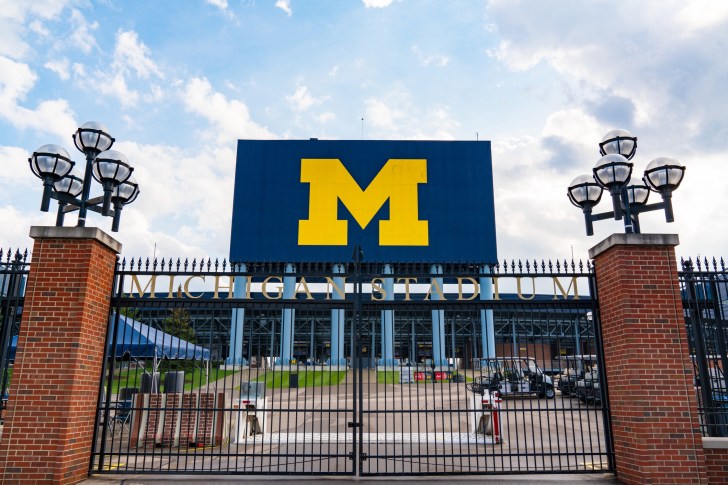
iStockphoto
With over 107,600 seats, “The Big House” is large enough to fit every wolverine on Earth, and then some. It’s the biggest coliseum in college sports. Built in 1927, its history is as rich as its capacity is vast. The University of Michigan’s football program, established in 1879, is one of the oldest and most storied in collegiate history. The Wolverines boast 11 national championships, with their most recent title coming in 1997 under Coach Lloyd Carr.
Beaver Stadium, Penn State
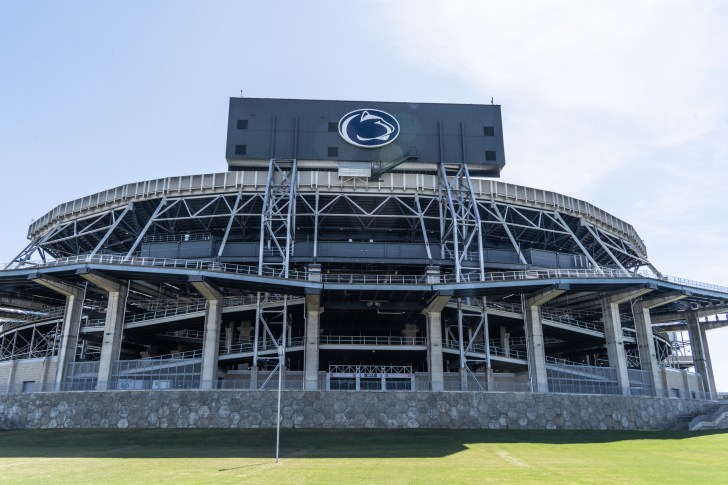
iStockphoto
Famous in recent years for white outs and chants of We Are, this Nittany Lions’ haven houses over 106,000 roaring fans. Beaver Stadiums’ history goes back to 1909, proving lions have long memories. The Nittany Lions have clinched two consensus national championships here, in 1982 and 1986.
Ohio Stadium, Ohio State
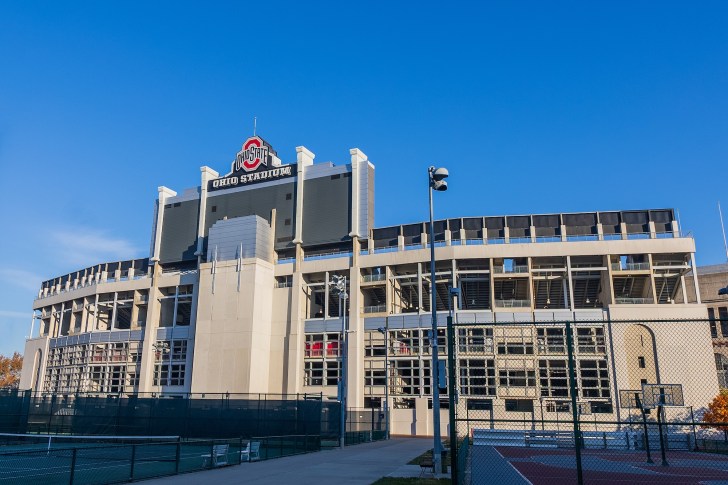
iStockphoto
Known as “The Horseshoe” due to its shape, this 102,000-seater, established in 1922, is where Buckeyes galore cheer and occasionally dot the ‘i’. The Ohio State Buckeyes football program, founded in 1890, has solidified its reputation as a collegiate juggernaut over the decades. With a storied history, the Buckeyes have secured eight national championships, with their latest title won in the 2014 season under Coach Urban Meyer.
Kyle Field, Texas A&M

iStockphoto
The Texas A&M Aggies football program, originating in 1894, is steeped in deep-rooted traditions and collegiate pride. The Aggies, known for their iconic “12th Man” tradition, secured their sole national championship in 1939 and continue to be a formidable presence in college football.
Since 1904, this field has witnessed the Aggies’ ups and downs. Now, with a capacity of 102,000, it’s Texas-sized in every way.
Tiger Stadium, LSU

iStockphoto
The LSU Tigers football program, launched in 1893, stands as a beacon of excellence in the collegiate sports landscape. With four national championships under their belt, the most recent being in 2019 under Coach Ed Orgeron, the Tigers have consistently showcased their prowess on the gridiron.
Echoing with chants since 1924, this 102,000-strong stadium in Baton Rouge is also fondly dubbed “Death Valley” – but only to the opposition, we promise.
Neyland Stadium, University of Tennessee

iStockphoto
Founded in 1899, the University of Tennessee Volunteers football team has celebrated several victorious seasons, claiming six national championships. While their storied history is marked by traditions like the “Vol Walk” and “Running through the T,” the program also proudly counts NFL legends Peyton Manning and Reggie White among its distinguished alumni.
This Knoxville gem, seating over 101,000, has echoed with “Rocky Top” since 1921.
Darrell K Royal-Texas Memorial Stadium, University of Texas

iStockphoto
The University of Texas Longhorns football program, which kicked off in 1893, is renowned for its storied legacy, boasting four national championships to date. The burnt orange and white have been worn by legendary players like Earl Campbell and Vince Young, both of whom left indelible marks on college football.
Holding over 100,000, this Austin powerhouse, established in 1924, proves everything’s bigger in Texas, including its history. Hook ’em!
Bryant-Denny Stadium, University of Alabama

iStockphoto
The University of Alabama’s Crimson Tide football team, inaugurated in 1892, stands as a true behemoth in college football, having secured 18 national championships over the years. Their illustrious history boasts legendary coaches like Paul “Bear” Bryant and iconic players, with recent stars like Derrick Henry and Tua Tagovailoa making waves in the sport.
Since 1929, over 100,000 Crimson Tide fans roll in here to declare their undying love for ‘Bama football, one of the most dominate college football programs of all time.
Sanford Stadium, University of Georgia
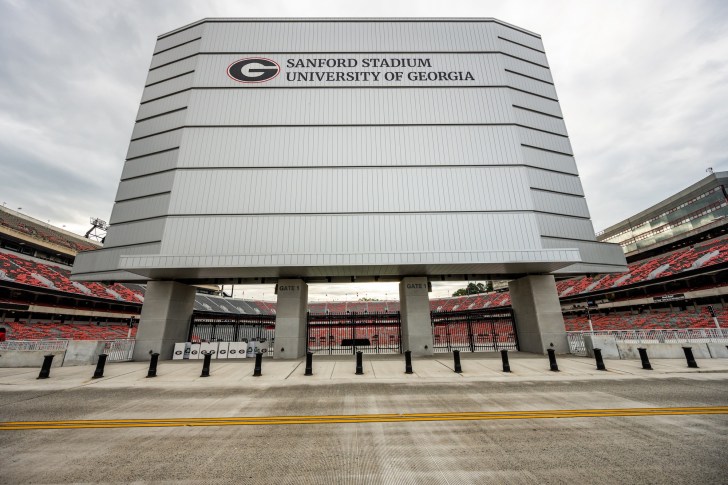
iStockphoto
The University of Georgia Bulldogs football program, which took root in 1892, proudly lays claim to eight times national champsionships, in 1920, 1927, 1942, 1946, 1968, 1980, 2021, and 2022.
Dating back to 1929, its hallowed hedges have seen 92,000+ Bulldogs fans cheer, bark, and occasionally howl at the moon.
Rose Bowl, UCLA
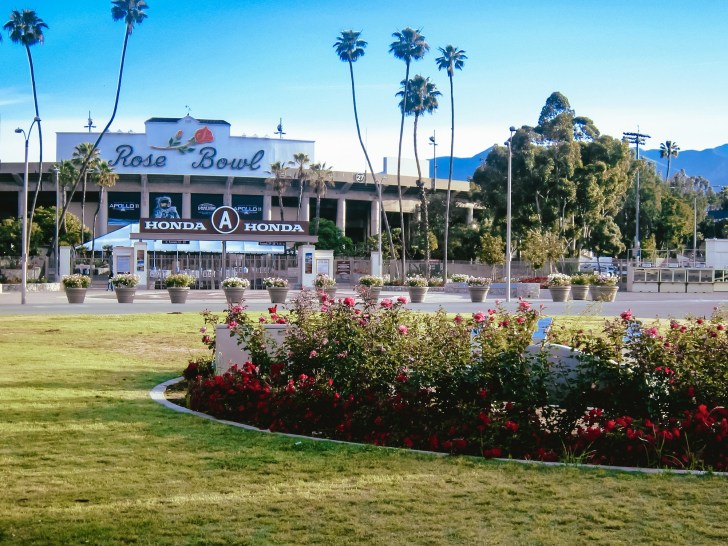
iStockphoto
Although not solely a college venue, it’s been home to the Bruins since 1982 and has hosted the famous Rose Bowl Game since 1923, the “grandaddy of them all.” It comfortably seats over 88,000.
If you ever get a chance to go, don’t miss the famous Rose Bowl sunset against the towering mountains of Pasadena.
Jordan-Hare Stadium, Auburn University

iStockphoto
Founded in 1892, the Auburn University Tigers football team boasts a storied history, capturing national championships in 1957 and 2010. The program, known for traditions like the “Tiger Walk” and “War Eagle” cry, has produced gridiron legends such as Pat Sullivan, Bo Jackson, and Cam Newton, all of whom won the Heisman Trophy.
With a capacity of 87,000, this 1939-founded stadium sees Tigers fans making more noise than its metallic namesake.
Gaylord Family Oklahoma Memorial Stadium, University of Oklahoma
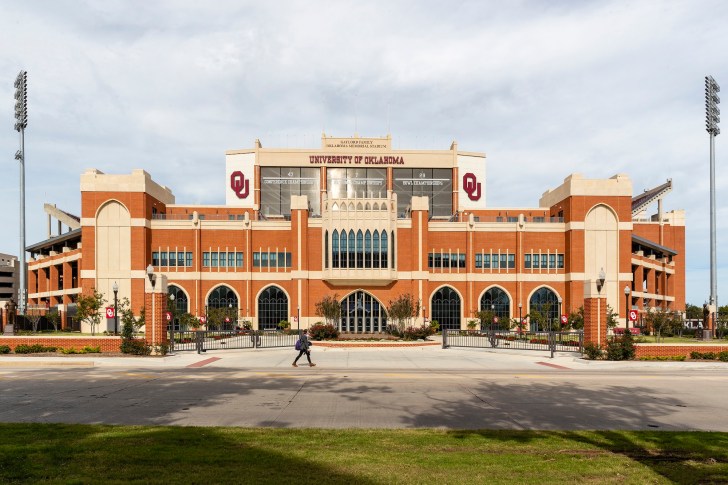
iStockphoto
The University of Oklahoma Sooners football program, established in 1895, is a perennial football powerhouse, clinching seven national championships over its storied history. Legendary coaches like Bud Wilkinson and Barry Switzer, along with iconic players such as Adrian Peterson, have cemented the Sooners’ legacy on the gridiron.
Boasting over 86,000 seats, this 1925 edifice ensures Boomer Sooners are never late to a football party.
Camp Randall Stadium, University of Wisconsin
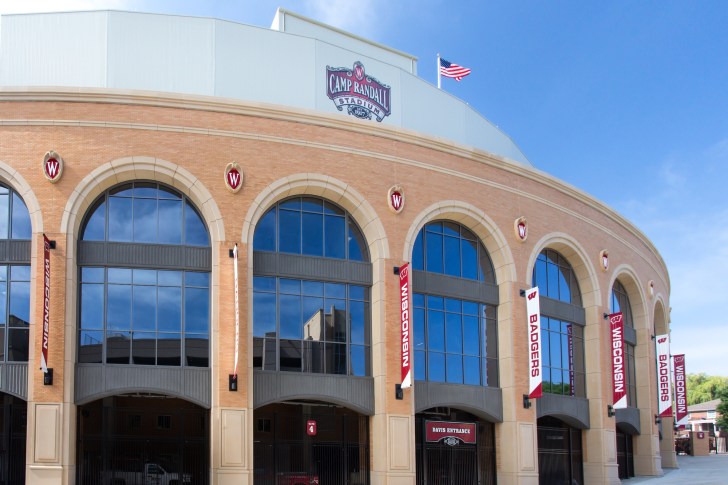
iStockphoto
Founded in 1889, the University of Wisconsin Badgers football team has consistently showcased its mettle in the Big Ten Conference, although a national championship has eluded them.
Camp Randall Stadium, one of the oldest college football venues, reverberates with traditions like the “Fifth Quarter” and the famed “Jump Around” ritual, making it a cornerstone of Badgers’ pride. Dating to 1917 and seating over 80,000, it’s where Badgers prove they’re good at more than just digging tunnels.
Notre Dame Stadium, University of Notre Dame
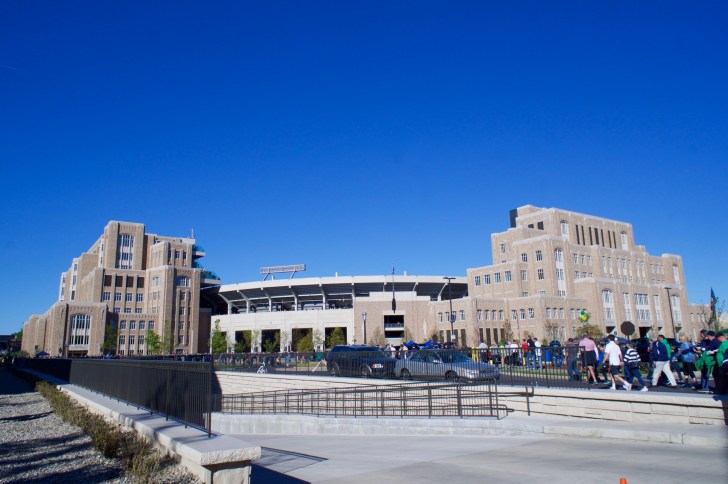
iStockphoto
The University of Notre Dame Fighting Irish football program, established in 1887, is iconic in collegiate sports, boasting 11 claimed national titles and an enduring legacy that even inspired the Hollywood film “Rudy” — a testament to the undying spirit of underdogs everywhere. With traditions like “Play Like a Champion Today” and legendary figures such as Knute Rockne, the Fighting Irish have solidified their place in football lore.
With over 77,000 seats, this 1930 landmark is more than just Touchdown Jesus and the Fighting Irish. It’s tradition incarnate.
Ben Hill Griffin Stadium, University of Florida

iStockphoto
Established in 1906, the University of Florida Gators football program has showcased its prowess on the gridiron, claiming three national championships in 1996, 2006, and 2008. The iconic “The Swamp” (Ben Hill Griffin Stadium) is where Gator Nation comes alive, with traditions like the “Gator Chomp” amplifying the electric atmosphere on game days.
“The Swamp” was built in 1930 and today hosts over 88,000.